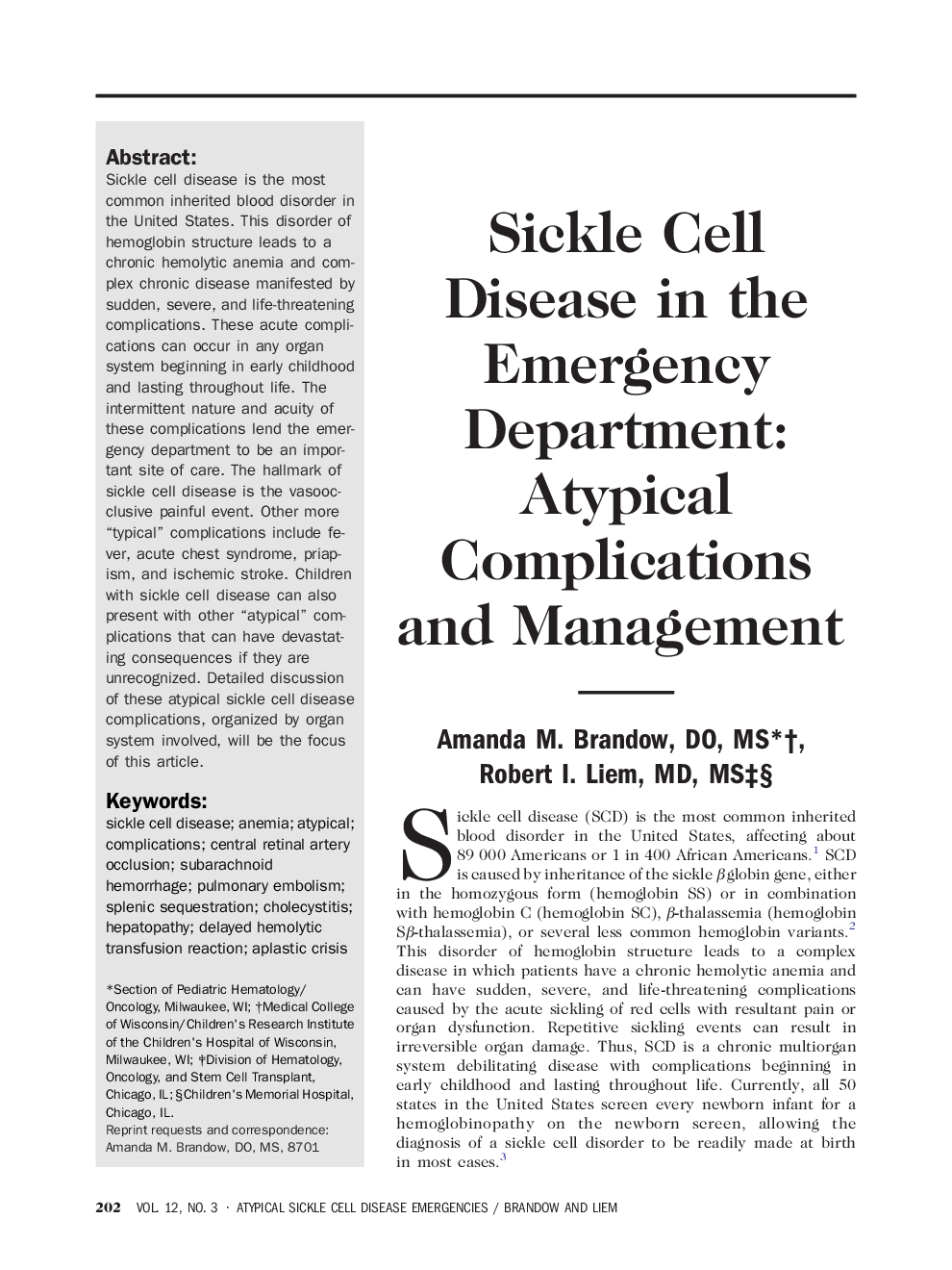| Article ID | Journal | Published Year | Pages | File Type |
|---|---|---|---|---|
| 3235861 | Clinical Pediatric Emergency Medicine | 2011 | 11 Pages |
Sickle cell disease is the most common inherited blood disorder in the United States. This disorder of hemoglobin structure leads to a chronic hemolytic anemia and complex chronic disease manifested by sudden, severe, and life-threatening complications. These acute complications can occur in any organ system beginning in early childhood and lasting throughout life. The intermittent nature and acuity of these complications lend the emergency department to be an important site of care. The hallmark of sickle cell disease is the vasoocclusive painful event. Other more “typical” complications include fever, acute chest syndrome, priapism, and ischemic stroke. Children with sickle cell disease can also present with other “atypical” complications that can have devastating consequences if they are unrecognized. Detailed discussion of these atypical sickle cell disease complications, organized by organ system involved, will be the focus of this article.
